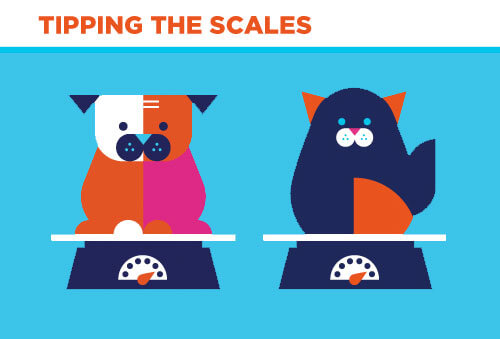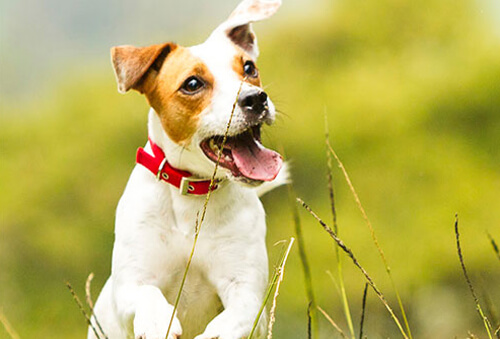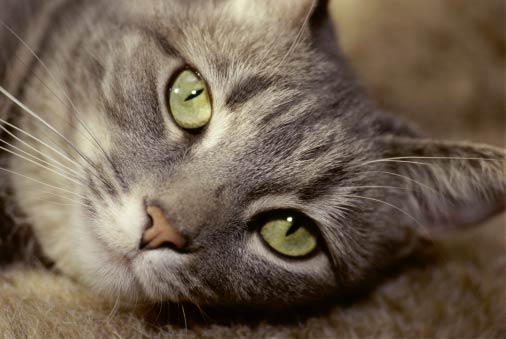Obesity in dogs and cats is at epidemic proportions. Studies show 52.6% of dogs and 57.6% of cats are overweight or obese in the United States. All it takes for your pet to be considered overweight is a few pounds. As a guide, that means 20% over a dog’s ideal weight or 15% over a cat’s, which translates to four pounds on a 20-pound dog, or just one-and-a-half pounds on a 10-pound cat!
If you think a few extra pounds won’t hurt your pet, imagine him or her carrying around a dumbbell. The extra weight adds stress to the joints. It makes the heart and lungs work harder. And that’s just the beginning of what being overweight can do to a dog or cat. For more information, visit our Pet Obesity Awareness Infographic.
Problems of Obesity: A Staggering List
Carrying excess weight can cause a tremendous array of health issues for both dogs and cats. Overweight and obese dogs are expected to live shorter lives than their fitter, normal weight counterparts. And obese cats are twice as likely to die in middle age, which for cats is 6 to 12 years of age. Here are other problems caused by obesity:
Joint Problems
Extra pounds can put added stress on joints, bones, ligaments and muscles. Conditions such as arthritis, hip dysplasia, spinal disc disease and ruptures of joint ligaments may be caused by obesity.
Cardiovascular and Respiratory Disease
Heart and lungs have to work harder to provide adequate oxygen and circulation. Also, extra fat in the chest cavity and around the heart muscle can decrease the efficiency of these vital organs. Obesity can also lead to hypertension (high blood pressure)
Diabetes
Just like in people, sugar diabetes is much more common in pets who are obese. Obesity causes an increase in the secretion of insulin in response to the increased blood glucose level in the pet. Insulin is also more in demand simply because there is a greater amount of tissue in an overweight pet. When requirements for insulin exceed the ability of the body to produce insulin, diabetes develops.
Liver Disease
The liver stores fat so when a dog or cat is overweight, an increased amount of fat builds up in the liver that can cause a condition called hepatic lipidosis.
Skin Problems
Obese animals often have trouble grooming themselves. The rolls of skin built up by fat deposits can often harbor dirt, bacteria and other harmful organisms. In fact, obese cats are three times more likely to visit veterinarians with non-allergic skin conditions.
Heat Intolerance
Insulating properties of excessive fat make obese animals uncomfortable and unable to tolerate heat.
Recognizing the Signs
Obesity is sometimes hard for a doting pet parent to recognize. After all, your furry friend looks beautiful to you no matter what. And when you see your pet day in and day out, gradual weight gain can go unnoticed. Here are objective ways to tell if your pet is too heavy:
Run your fingers over your pet
You should be able to feel the backbone and ribs without pressing. If you need to press, there’s too much fat.
Examine your pet’s “figure”
Ask your veterinarian how you can assess your pet's Body Condition Score. For a visual assessment, start by looking for a curved indentation in the area of the waist (just behind the rib cage) that should be visible from above. A “straight line ” from head to tail, or a bowed-out line along the back, could likely mean your pet is overweight.
Viewed from the side, your pet should have a nice “tuck up ” area behind the rib cage and before the hind legs. A “straight line ” or a saggy area in the belly is a sign of being overweight. Other signs of being overweight are extra padding and folds at the base of the tail, and, depending on breed (especially where dogs are concerned), visible folds of skin around the face and under the chin.
Observe your pet in action
Extra pounds can diminish your pet’s activity level, but no one is better equipped to evaluate this than you. After all, who knows your pet better? Here are some telltale behavioral signs that your pet may be too heavy:
Dogs
- May be slow and cumbersome
- May find it hard to do every day things like chase a ball
- May show less and less interest in activities and games
- May become obsessive about food
Cats
- May often appear tired and lazy
- May hesitate when jumping onto furniture or climbing stairs
- May have difficulty grooming properly
- May have matted hair on the back or tail area
- May resist playing games
Losing the Weight Problem
To maintain a healthy weight, our furry friends need to follow the same simple formula we humans do. Expend the number of calories you take in. If you take in more calories than you use, you’ll gain weight. If you take in fewer calories than you use, you’ll lose weight. To keep your pet at an ideal weight, you need to find the right balance of food and exercise.
Use the following guidelines to help your pet achieve this goal:
Sensible Nutrition
Consider giving your dog sensible foods like BLUE Healthy Weight formulas for dogs or your cat foods like BLUE Weight Control formulas for cats. Without all of the extra fat calories, these BLUE natural foods are formulated to help dogs and cats achieve and maintain healthy weight.
Exercise
A brisk walk at a steady pace for dogs and a stimulating game of bat-the-feather for cats are great ways to keep your pet in shape, but there are many additional ways to make sure your pet gets a good workout. Additional benefits can include physical participation for you, mental stimulation for your pet, and greater bonding between the two of you.
Healthy Treats
Treats are great tools for encouraging good behavior in pets, but they do contain calories and should be used in moderation. As a rule, treats should account for no more than 10% of your pet’s food intake. Look for treats with only natural ingredients and no corn, wheat or soy. BLUE Dog Treats and BLUE Cat Treats contain whole grains, garden veggies and fruit, and no fillers. They’re delicious and nutritious.
Attention
With so many demands on our time these days, we may be inclined to substitute food for playing, exercising, and other activities with our pets. If you’re tempted to express your affection with treats or table scraps, remember that the best way to show your love for your pet is to help him or her live a long, healthy life.
Know Your Breed
Certain breeds are more susceptible to weight problems and obesity. Among cats, obesity is more common among mixed breeds than purebreds. Just a few of the dog breeds whose weights need constant monitoring are Basset Hounds, Golden and Labrador Retreivers, Dachshunds and Cocker Spaniels.
Hydration
Keep your pet’s water bowl full. Hydration is vital for good digestion and overall health.
Weigh-Ins
Make sure that your pet gets periodic weigh-ins. As you probably know all too well, it’s easier to keep weight off than to lose it.
Check Ups
It’s important your pet sees the vet at least once a year — to assess overall health and monitor any weight gain that may have occurred in the previous year. Keeping your furry friend in top shape may require some effort, but remember: the healthier your pet’s weight, the better you’ll both feel.





